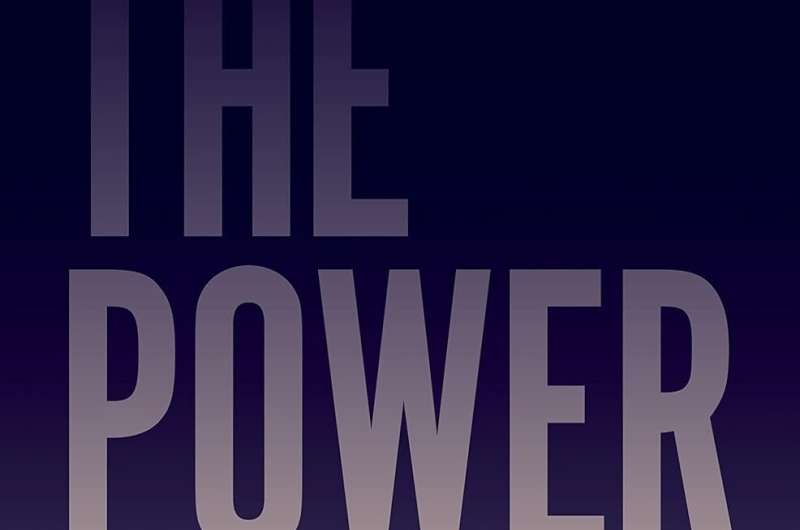This article has been reviewed according to Science X's editorial process and policies. Editors have highlighted the following attributes while ensuring the content's credibility:
fact-checked
trusted source
proofread
Q&A: Is hopelessness a US public health crisis?

How can the world's wealthiest country be so poor in hope? It's a question that a University of Maryland economist is asking about the United States, where unprecedented levels of despair have manifested in a national mental health crisis, a surge in opioid abuse and suicide, and increased workforce dropout.
In College Park Professor of Economics Carol Graham's most recent book, "The Power of Hope: How the Science of Well-Being Can Save Us from Despair," Graham explores the scientific drivers behind well-being and reveals a compelling finding: People imbued with hope are not only happier and healthier, but are also more likely to pursue opportunity, hold jobs and work for a better future.
An authority on "well-being economics," Graham studies happiness and hope as a senior fellow at the Brookings Institution. Her research has tracked markers of hope and despair and their implications on health, education and prosperity in Latin America and the United States, particularly among young people, for over two decades. It has spurred countries like England and New Zealand to factor well-being metrics into policymaking, but she says the United States lags behind.
"Hope is key to aspirations and future investment, but also life expectancy," she said. "And in the United States, we are in trouble. It's something we really need to be paying attention to."
Graham spoke to Maryland Today about the dangerous side of despair, the link between hope and longevity and the demographic most at risk:
What is hope?
I make a distinction between hope and optimism. They share some similarities—both are the belief that things will get better. The difference, though, is that the optimist just believes it's going to get better, but hope entails individual agency. It isn't just the belief that things will get better, it's the belief that you can do something to make it better, and that creates a big difference in terms of the outcomes.
Your research has linked levels of hope with early mortality. Can hopelessness kill you?
Of all the metrics our research team used to track trends in despair in different cohorts and how they linked to deaths of despair later, lack of hope was the most important one. People with hope have a higher life satisfaction—they are likely to be healthier, to live longer, to work longer and invest in themselves. And we see this across all age groups and demographics. One definition of despair is not caring if you live or die. If that's your emotional state, you're not going to take opportunities to invest in your future.
What's surprised you in your research about hope in the United States?
Our data has shown that African Americans are much more hopeful than whites—there is much more resiliency. We see an even bigger gap between low-income Blacks and whites. When we first observed this, I thought it was a coding error, but it's been confirmed over and over again, and I think part of it is the role of communities.
White Americans on average have historically had more secure and stable lives, but they don't typically have the big extended communities found among Black Americans. Given that minorities have a history of discrimination, there's a very different sense of falling behind and helping each other out, versus the individualistic viewpoint of the American dream largely adopted by blue-collar whites. The problem is, when they started falling behind, they didn't have another narrative.
How is despair bleeding into public discourse?
One of the things I've been working on recently is the link between despair and vulnerability to misinformation and conspiracy theories. White prime-age males who've left the labor force feel very displaced and tend to be isolated. Those are the people who are very easy to radicalize. And if you look at where they're concentrated, they tend to not have local newspapers, they don't have educational opportunities beyond high school—they tend to be in hollowed-out manufacturing places.
We have some preliminary data on the makeup of individuals who stormed the Capitol on Jan. 6; the majority were isolated from their families and communities. If you're in that frame of mind, you don't have anything to lose.
How do we restore hope?
It's a hard question. Part of the solution is just having an accurate diagnosis: Why don't we measure well-being like other countries do so we can direct our efforts at the most vulnerable populations? Places that track well-being, like England, are now piloting interventions—programs as simple as access to volunteering, which get people out of their homes and gives them meaning and purpose. These are the things that people in despair lack.
They have a program introducing middle and high school students to soft skills and socio-emotional skills, like self-esteem and combatting loneliness. Then they evaluate the kids on their academic performance and level of well-being three years later, and it actually works on both fronts. In my interviews with adolescents who had just graduated high school in the States in low-income neighborhoods, they had no clue what was next.
And it's exactly those soft skills, those socio-emotional skills that are most valued in the labor markets of tomorrow. That's the kind of stuff we really need to think about.
Provided by University of Maryland



















